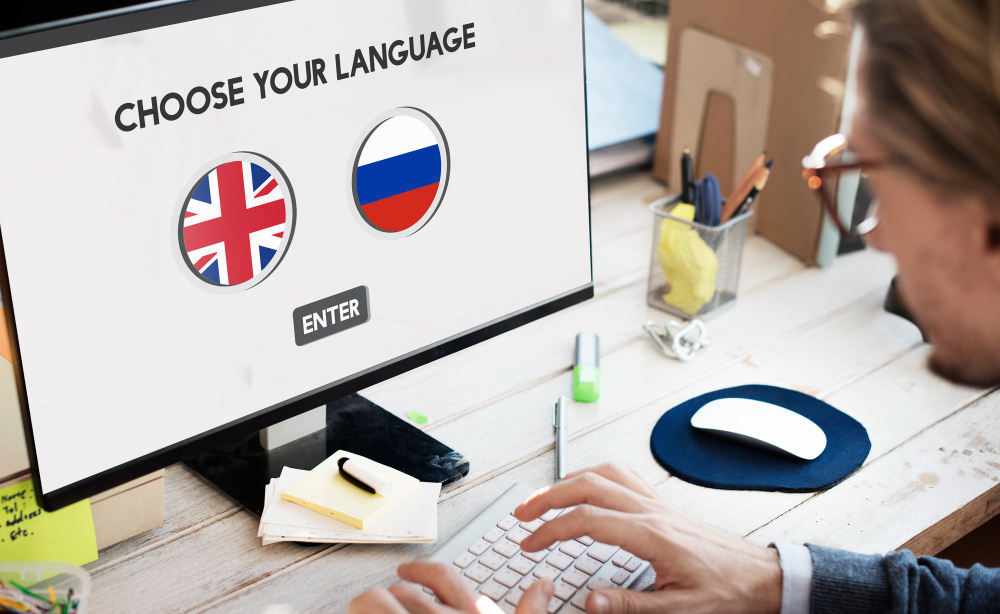AI vs. Human Translators: Which Is Better for Arabic Translation Services?
Sep 15, 2025, Nishi SinghA few years ago, a global fast-food chain learned a hard lesson about Arabic translation. They launched a major campaign in the Middle East, using a machine-translated slogan for their new chicken sandwich. The English phrase, meant to be appetizing and exciting, was rendered in Arabic as "It will make your fingers fall off." Not quite the mouth-watering invitation they were hoping for. The campaign was a costly failure, becoming a case study in what happens when you underestimate the complexity of a language.
This brings us to a central debate in our industry: AI vs human translators. With the rapid advancements in artificial intelligence, many businesses are tempted by the speed and low cost of machine translation. But when it comes to a language as rich and nuanced as Arabic, is technology truly up to the task? The question isn't just about speed; it's about accuracy, cultural relevance, and effectiveness.
This post will explore the ongoing showdown of human vs machine translation, specifically for Arabic translation services. We will look at the strengths and weaknesses of both, helping you decide on the best translation for Arabic to meet your specific needs.
The Allure of AI: Speed, Scale, and Savings
Let's be honest: the promise of AI translation is incredibly appealing. Platforms can translate massive volumes of text in seconds, at a fraction of the cost of a human team. For certain tasks, AI is a powerful and practical tool.
If you need to get the general gist of an internal email or a foreign news article, machine translation is fantastic. It provides instant comprehension for low-stakes content where nuance isn't a priority. The technology has improved significantly, moving beyond simple word-for-word replacement to recognize some patterns and contexts.
However, these systems work by analyzing vast databases of existing translations. They are pattern-matching machines, not thinking entities. This is where their limitations become glaringly obvious, especially with a language like Arabic.
Why Arabic Trips Up the Machines
Arabic is not just another language; it's a linguistic universe of its own. Its complexity presents a unique set of challenges that current AI models struggle to overcome.
The Nuance of Dialects
There is no single "Arabic." Modern Standard Arabic (MSA) is used in writing, news broadcasts, and formal settings. But spoken Arabic varies dramatically from Morocco to Oman. An Egyptian might struggle to understand a Moroccan dialect, and vice versa. AI translators are typically trained on MSA and often fail to capture the local flavor and specific vocabulary of a target country's dialect, making marketing content or user interfaces feel foreign and disconnected.
Context is Everything
Arabic is a highly contextual language. A single word can have multiple meanings depending on the surrounding text, the speaker's intent, and the cultural situation. For example, the word "عيون" (uyun) can mean "eyes," "water springs," or "spies." A human translator uses their understanding of the context to choose the correct meaning. An AI, lacking true comprehension, can easily pick the wrong one, leading to nonsensical or comical results.
The Subtleties of Formality and Politeness
The language has intricate levels of politeness and formality embedded in its grammar and vocabulary. Addressing a respected elder requires a different set of phrases than speaking to a friend. This is a critical aspect of business communication in the Arab world. AI translation often flattens these social nuances, producing text that can come across as unintentionally rude, overly casual, or just plain awkward. This is where the need for professional Arabic translation by a human expert becomes undeniable.
The Human Advantage: Culture, Creativity, and Critical Thinking
Where machines falter, human translators excel. A professional linguist offers far more than just linguistic conversion; they provide a bridge between cultures.
Cultural Adaptation, Not Just Translation
The best human translators don't just translate your words; they transcreate your message. They understand that a concept that works in a Western context might need to be completely re-imagined for an Arab audience. This could involve changing idioms, adjusting imagery, and ensuring the overall tone respects local customs and values. This deep cultural intelligence is something algorithms cannot replicate.
For example, a marketing campaign centered on individualism might not resonate in a more collectivist culture. A human translator can advise on adapting the core message to emphasize community or family values, making it far more effective.
Handling Creative and Persuasive Content
When it comes to marketing copy, literary texts, or any content designed to evoke emotion, the human touch is irreplaceable. Slogans, puns, and creative wordplay depend on a deep, intuitive grasp of language that is beyond the scope of AI. A human can capture the spirit of the original text, ensuring it has the same persuasive power and emotional impact in Arabic. This is the core of professional Arabic translation.
Quality Assurance and Accountability
A professional human translation process involves more than just one person. Reputable Arabic translation services use a multi-step quality assurance process, often involving a translator, an editor, and a proofreader. This ensures accuracy, consistency, and polish. If there's an issue, you have a human project manager to talk to—someone who is accountable for the final product.
The Verdict: AI as a Tool, Humans as the Masters
So, in the battle of AI vs human translators, who wins? The answer is not about replacement, but collaboration. The best translation for Arabic often involves a hybrid approach. AI can be used to handle initial drafts of large, repetitive texts (like technical manuals or user reviews), which are then thoroughly reviewed, edited, and perfected by a human expert. This process, known as Post-Edited Machine Translation (PEMT), can improve efficiency without sacrificing quality.
However, for any content that is customer-facing, legally binding, or brand-defining, the human element remains non-negotiable. Marketing materials, legal contracts, medical documents, and sophisticated software interfaces demand the critical thinking, cultural awareness, and creative finesse that only a professional human translator can provide.
Your choice between human vs machine translation ultimately depends on your goals. If you just need to understand, AI might suffice. But if you need to connect, persuade, and build trust, you need a human.
When your message needs to be perfect, don't leave it to chance. At myTranscriptionPlace, we understand the unique demands of the Arabic language. As a trusted leader in Translation Services, we provide expert human translators who ensure your content is not only accurate but also culturally resonant and impactful.






